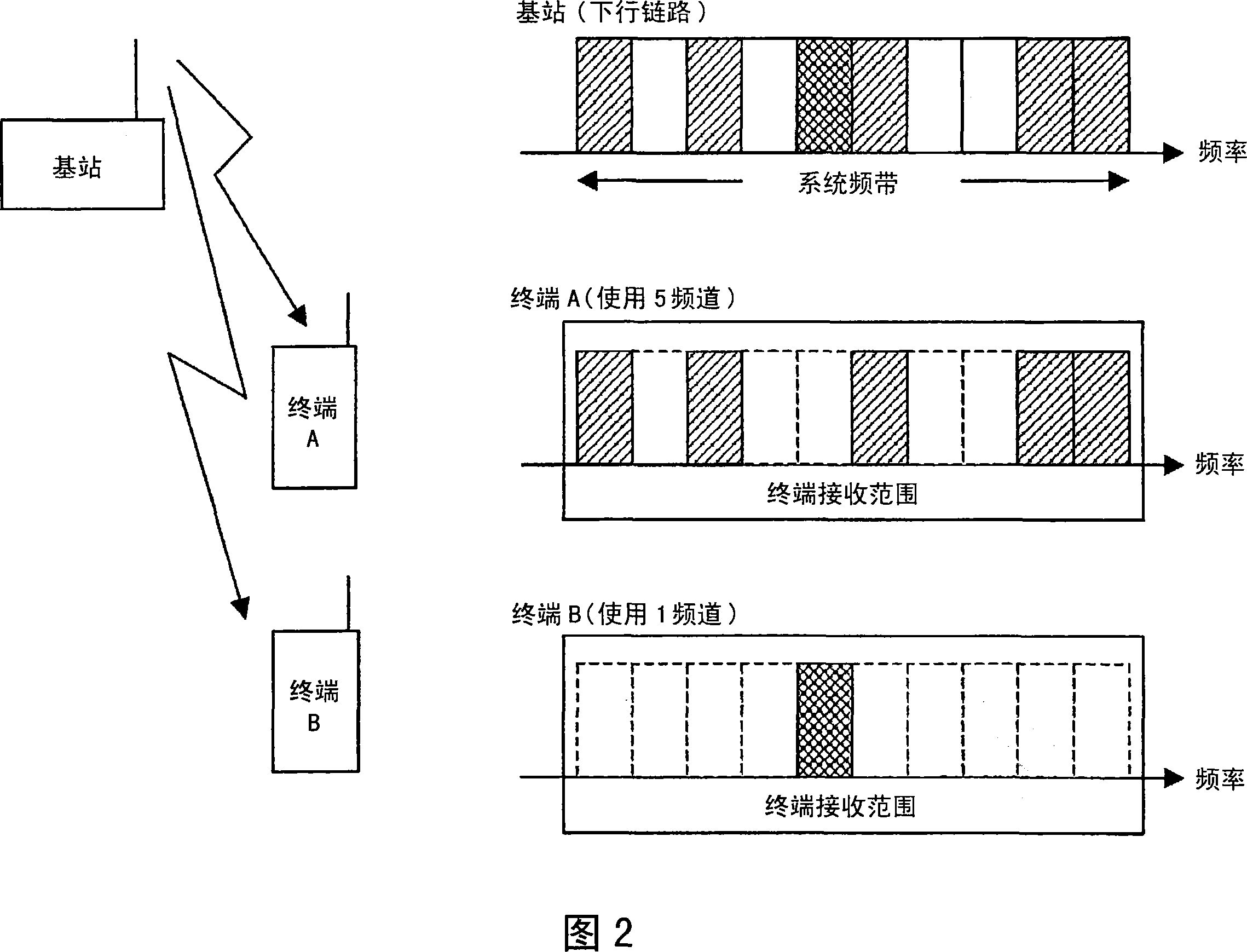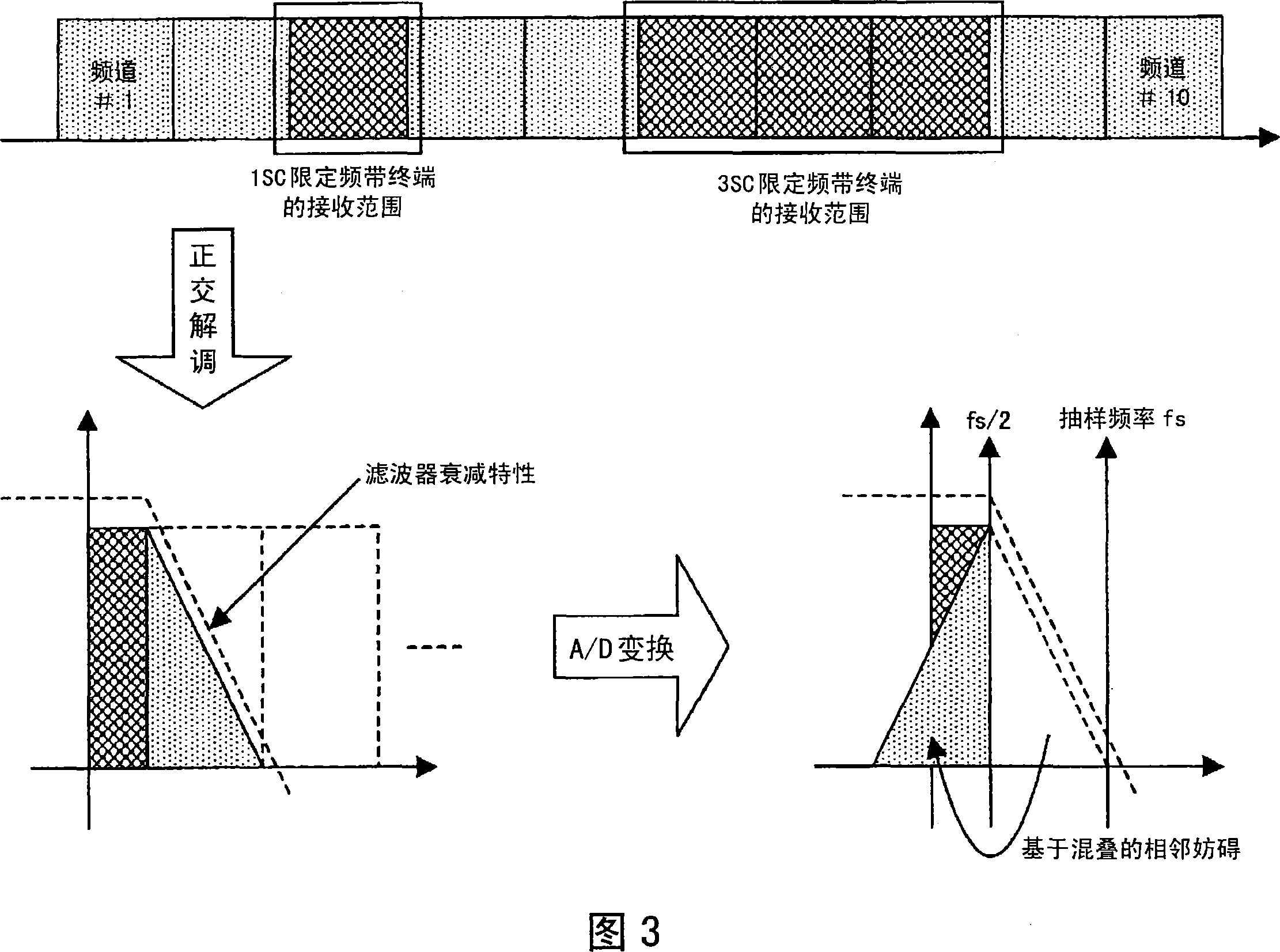Wireless communication apparatus, mobile terminal and wireless communication method
A wireless communication device and wireless communication technology, applied in wireless communication, multiplexing communication, transmission path separation device, etc., capable of solving problems such as low-cost terminal barriers
- Summary
- Abstract
- Description
- Claims
- Application Information
AI Technical Summary
Problems solved by technology
Method used
Image
Examples
no. 1 Embodiment approach
[0071] FIG. 4 is a block diagram showing a schematic configuration of a base station related to the first embodiment. The wireless signal received by the antenna unit 1 is converted from the wireless signal into an electric signal by the high-frequency circuit and the analog processing unit 2 , and FFT (Fast Fourier Transform: Fast Fourier Transform) is performed by the FFT unit 3 . Next, in the equalization unit (equalization unit) 4 , the reception waveform deteriorated by multipath delay distortion and the like is calibrated, and in the subcarrier demodulation unit 5 , demodulation is performed for each subcarrier.
[0072] Next, the terminal reception quality information processing unit 6 analyzes the reception quality information received from each terminal. That is, in the limited-band terminal as described above, only in the limited-band portion, it is possible to once measure reception quality information such as a channel with a better reception status than the downli...
no. 2 Embodiment approach
[0090] Fig. 10 is a diagram showing an example of channel arrangement for DL in the related OFDM communication system according to the second embodiment. The base station recognizes that the channel is assigned to the channel terminal, and sets the magnitude of the transmission power to zero for all subcarriers of the channel adjacent to the terminal's reception frequency band. That is, it is equivalent to extending the corresponding subcarriers to all frequency channels and not allocating power. This is performed after other users are always allocated to adjacent channels in the first embodiment, whereas the second embodiment is different in that other users are not allocated to adjacent channels from the beginning.
[0091] For example, in FIG. 10 , the number of channels that can be handled is limited to 1 channel (1SC) in two adjacent channels within the receivable range of a limited-band terminal, and all subcarriers have transmission power levels of zero. Likewise, in...
no. 3 Embodiment approach
[0093] Fig. 11 is a diagram showing an example of a communication frame in the related OFDM communication system according to the third embodiment. In the first and second embodiments, the allocation on the frequency axis has basically been described. However, the allocation of channels for each communication partner basically uses a period determined by a plurality of symbols with a certain duration as a time channel, and uses a unit called a communication frame composed of multiple time channels and multiple channels. method to proceed. That is, in the method of allocating the most appropriate time slot to each communication partner in the communication time slot determined from one frame by the time channel and frequency channel, the present invention is applied to the allocation in units of the communication frame after that instruction of. The communication frame is numbered by using 10 frequency channels as channels and 10 time slots as time channels as one frame. In ...
PUM
 Login to View More
Login to View More Abstract
Description
Claims
Application Information
 Login to View More
Login to View More - R&D
- Intellectual Property
- Life Sciences
- Materials
- Tech Scout
- Unparalleled Data Quality
- Higher Quality Content
- 60% Fewer Hallucinations
Browse by: Latest US Patents, China's latest patents, Technical Efficacy Thesaurus, Application Domain, Technology Topic, Popular Technical Reports.
© 2025 PatSnap. All rights reserved.Legal|Privacy policy|Modern Slavery Act Transparency Statement|Sitemap|About US| Contact US: help@patsnap.com



